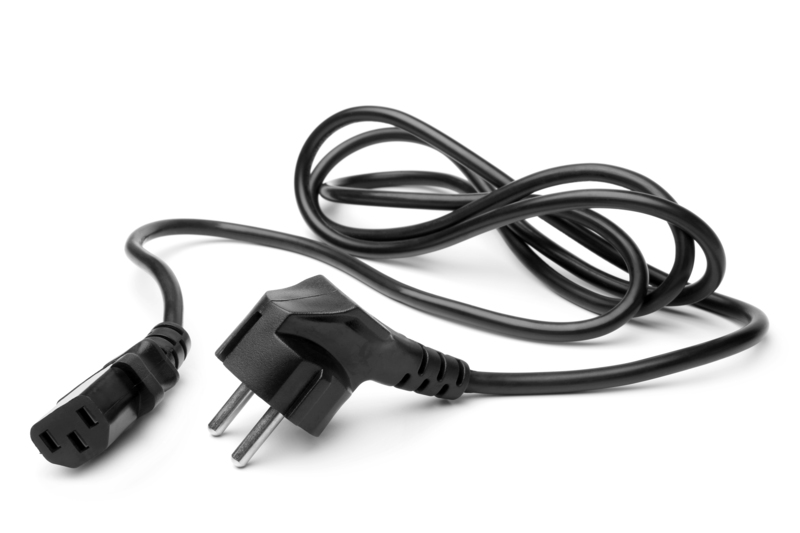The Complex World of Piano Moving: A Persuasive Case for Professionals
Posted on 29/05/2025
The Complex World of Piano Moving: A Persuasive Case for Professionals
Moving a piano might seem, at first glance, to be just another part of household relocation. However, anyone who has attempted this feat--or worse, suffered the consequences of an ill-advised DIY attempt--knows otherwise. The complex world of piano moving is filled with unique challenges, delicate mechanisms, and significant risks. This article delves into the multifaceted nature of piano relocation, articulating a solid case for entrusting your valuable instrument to experienced professionals. Whether you are an avid musician, a concert hall manager, or a homeowner, understanding the intricacies of piano transport can save you from costly mistakes.

Understanding the Anatomy of a Piano
To appreciate why professional piano movers are so essential, it's vital to first grasp what makes pianos so complicated to move.
Weight and Size: Not Your Average Furniture
- Grand pianos often weigh between 500 to over 1,200 pounds, with some concert grands tipping the scales even further.
- Upright pianos, though more compact, still range from 300 to 800 pounds.
- Their dimensions and awkward shapes--often with protruding legs and delicate pedals--make navigation through doorways and staircases especially challenging.
Delicate Inner Mechanisms
The inner workings of a piano are akin to a finely tuned clock.
- Each instrument contains over 10,000 moving parts--all intricately balanced to create its signature sound.
- Slight tilting or jarring can ruin internal alignments, detune strings, or even crack the cast-iron harp which holds the tonally critical tension.
- Humidity and temperature fluctuations during a move can alter a piano's delicate balance, affecting sound quality and playability.
The Hidden Risks of DIY Piano Moving
The temptation to save money by moving a piano yourself can be strong, but the risks far outweigh the savings.
Physical Safety Hazards
- Injury risk: Pianos are notorious for causing back injuries, crushed fingers, and even more severe accidents due to their immense weight.
- Improper lifting techniques can lead to slips, falls, or the piano toppling over, endangering everyone involved.
- Property damage: Floors, stairs, walls, and door frames can be severely scratched, dented, or destroyed if the piano moves incorrectly or unexpectedly.
Instrument Damage
Even a minor mishap can result in permanent harm:
- Soundboard cracks: Sudden jolts can crack the soundboard, the heart of a piano's resonance, resulting in expensive repairs or a loss of tonal quality.
- Loose or snapped strings can occur with a simple drop or bump.
- Pedal assembly bends or breaks under weight or if not properly supported during transport.
Financial Consequences
What starts as a way to save a few hundred dollars can lead to:
- Repair bills that quickly surpass professional moving costs.
- Devaluation of high-end or antique pianos due to visible damage or internal faults.
- Insurance claims difficulties if the move was not handled by a certified expert.
Why Professional Piano Movers Are Indispensable
Piano moving companies bring more than just manpower--they offer a blend of technical knowledge, specialized equipment, tailored insurance, and years of hands-on experience.
Specialized Equipment
Professional movers utilize:
- Piano skids (sleds), straps, and dollies designed specifically for safe piano transport.
- Protective wrapping materials to guard against scratches, dents, and exposure to environmental threats.
- Hoisting systems and cranes for maneuvering pianos through upper-story windows or tight spaces where stairs are impossible.
Expertise and Technique
Knowledgeable piano movers:
- Conduct thorough site assessments before the move, identifying obstacles and planning the safest route door-to-door.
- Understand proper weight distribution and lifting mechanics to avoid personal injury and instrument damage.
- Have experience with disassembly and reassembly for grand pianos, ensuring that legs, pedals, and lids are safely removed and expertly reattached.
Insurance and Peace of Mind
- Licensed piano movers provide comprehensive insurance coverage for both your instrument and property during every phase of the move.
- This coverage includes potential damages, theft, or loss--protection not available to amateur movers.
Common Questions About Professional Piano Moving
For those still on the fence about hiring professional piano movers, here are answers to some frequently asked questions:
Is Professional Piano Moving Expensive?
The price varies depending on instrument type, distance, complexity (stairs, narrow passages), and location. While a typical upright piano move within a city might cost between $200 and $600, grand pianos or longer distances will command higher fees.
Remember: This price is a small fraction of what you could pay to repair irreparable damage or replace a cherished instrument after an amateur attempt goes wrong.
Can Regular Movers Handle Piano Moves?
Most standard moving companies do not have the equipment or expertise necessary for piano relocation. Some may agree to move your piano, but at significant risk to both the piano and your property.
Always verify: Does your mover have specialized piano moving experience? Can they provide references or proof of insurance specifically for high-value musical instruments?
What Makes Piano Moving So Specialized?
Unlike other heavy objects, pianos are:
- Intricately balanced and extremely top-heavy, making them prone to tipping.
- Sensitive to environmental changes, requiring precise handling and timely movement.
- Fragile in both exterior finish and internal mechanisms, susceptible to damage from minor jolts or shifts.
The Step-by-Step Process of Professional Piano Moving
Understanding the methodical, detail-oriented techniques used by professionals can highlight why DIY efforts so often fall short.
1. Pre-Move Assessment
The moving team visits your location to:
- Measure doorways, hallways, and staircases
- Identify obstacles--tight corners, low ceilings, uneven surfaces
- Plan for potential weather issues on moving day
2. Preparing the Piano
- Wrapping the instrument in protective blankets and plastic wrap
- Disassembling parts like music stands, legs, or pedals if necessary
- Securing lids and keys to avoid internal damage during transport
3. Safely Lifting and Transporting
- Using specially designed dollies and skids to distribute weight evenly
- Employing proper lifting techniques for transitions on stairs or difficult terrain
- Team communication to ensure coordinated movement and safe navigation
4. Loading and Trucking
- Pianos are secured in transport vehicles with reinforced straps and padding to minimize movement
- Professional movers use climate-controlled vehicles for long-distance or high-value instruments
5. Delivery and Set-Up
- Reverse the process: careful unloading, reassembly, and final placement in your new location
- Final inspection for any possible damage and immediate resolution if problems are detected
Advantages of Choosing Seasoned Piano Moving Specialists
Beyond technical prowess, hiring a seasoned piano transport company delivers peace of mind, convenience, and long-term savings.
- Time-Efficiency: Professionals work faster and safer, minimizing disruption to your schedule.
- Stress Reduction: Handing over responsibility reduces anxiety for families, performers, or venue managers.
- Guaranteed Results: Established movers back their work with contracts, insurance, and satisfaction guarantees.
- Preservation of Value: Pristine handling protects the value of both contemporary and antique pianos alike.

Finding the Right Piano Moving Company
If you've decided to hire experts, follow these steps to select a reputable specialist:
- Check Credentials: Verify licensing, insurance, and reviews specific to piano moving.
- Request References: Speak to past clients or venues for real-world feedback.
- Get Detailed Quotes: Insist on fully itemized estimates--avoid vague pricing or "surprise charges."
- Confirm Experience: Ask about experience with your specific type of piano, from spinets to concert grands.
- Understand Insurance: Ensure coverage includes transit, handling, and in-home placement.
Conclusion: Trust Your Piano to the Pros
In the complex world of piano moving, the risks associated with amateur relocation efforts far outweigh the perceived savings. Every piano, from a family heirloom upright to a concert grand, represents a significant investment--financially, emotionally, and culturally. Only professional piano movers possess the skills, experience, and resources necessary to move these cherished instruments safely and securely.
If you're planning a move--across town or across the country--let the experts handle your piano. You'll protect not only your instrument and your property, but also your peace of mind. In piano moving, as in music, expertise makes all the difference.









